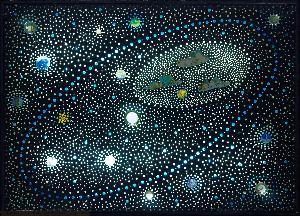Gyula Kosice
Falk Gyula;Gyula Kosice
Place: Košice
Born: 1924
Death: 2016
Biography:
Gyula Kosice, born as Ferdinand Fallik, was a Czechoslovakian-born and naturalized Argentine sculptor, plastic artist, theorist, and poet. He played a pivotal role in defining the concrete and non-figurative art movements in Argentina and was one of the precursors of kinetic, luminal, and hyrdokinetic avant-garde art.
Early Life and Career
Kosice was born in Košice, Czechoslovakia in 1924. He began his artistic career as a sculptor and later became involved in the concrete and non-figurative art movements. His work was revolutionary in that it used, for the first time in the international art scene, water and neon gas as part of the artwork.
Artistic Style and Contributions
Kosice created monumental sculptures, hydrospatial walks, hydrowalls, etc. He is also known for his involvement in founding the Association Arte Concreteo – Invacion (AACI) and Grupo Madí. Kosice made more than 40 personal and 500 collective exhibitions all over the world.
Influences and Legacy
Kosice's work has been influenced by various art movements, including El Movimiento Artístico del Pop Art. His contributions to the art world have been recognized, and his work can be found in various museums and galleries, including the Hastings Museum and Art Gallery, which is located in Hastings, Reino Unido.
- Some of his notable works include monumental sculptures, hydrospatial walks, and hydrowalls.
- Kosice's use of water and neon gas in his artwork was a pioneering move in the art world.
- He was a founding member of the Association Arte Concreteo – Invacion (AACI) and Grupo Madí.
- Kosice's work has been exhibited in over 500 collective exhibitions around the world.
Conclusion
Gyula Kosice was a pioneer of concrete and non-figurative art, and his contributions to the art world are still recognized today. His use of water and neon gas in his artwork was a revolutionary move, and his involvement in founding the Association Arte Concreteo – Invacion (AACI) and Grupo Madí has had a lasting impact on the art world. For more information on Kosice's work, visit https://Wikioo.org/Art.nsf/O/A@D3B8E9.






